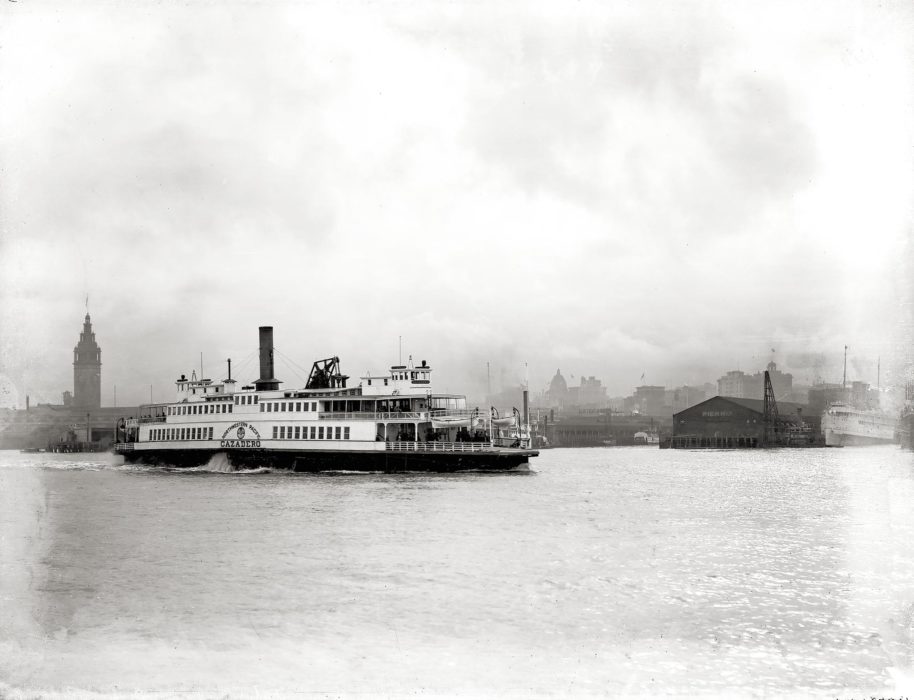PHOEBE APPERSON HEARST HELD her dress above her shoes to step from the limousine parked in front of 1815 California Street, where ‘Abdu’l-Bahá had been staying. It was October 13, 1912. She was a small woman and kept her hair pulled tight on top of her head except for several short curls that hung loose to frame her face. After her husband died in 1891, she took over what was then the largest private mining company in the United States. The University of California at Berkeley had risen on her dollars. Today she had arrived to escort ‘Abdu’l-Bahá to her nineteen-hundred-acre estate in nearby Pleasanton for a three-night stay in the countryside.
It was a sunny day, and they drew the blinds in Mrs. Hearst’s limousine, then sped off down California Street toward the ferry terminal at the end of Market Street. After disembarking from the ferry across the bay in Oakland, the journey to Phoebe Hearst’s estate took them thirty-five miles through the redwoods of California.
Phoebe Hearst and ‘Abdu’l-Bahá had first met almost fourteen years earlier in the penal colony of ‘Akká, Palestine, a city so polluted that most of its vegetation had vanished. ‘Abdu’l-Bahá’s father, Bahá’u’lláh, had called it “The Most Great Prison.” Mrs. Hearst had planned and paid for the first Americans to travel to ‘Akká to meet ‘Abdu’l-Bahá, where he lived as a political prisoner of the Ottoman Empire.

The Hearst estate in Pleasanton was more of a castle than a house. Its white Spanish Revival towers were topped with red shingles. Gardens covering the surrounding property overflowed with flowers that Mrs. Hearst sent as gifts to her large circle of friends all over the country. She called her home “Hacienda del Pozo de Verona” after a fountain she had imported from Italy and placed in a courtyard.
The estate was a business in and of itself. It was surrounded by machine shops, a dairy, orchards, vegetable gardens, and a working ranch with cows, poultry, hogs, pheasant, ducks, and geese, providing Mrs. Hearst and her stream of guests with everything they needed. Her home had forty guest rooms, each with a fireplace and a marble bath. The estate even had its own train station and telephone line, and eventually housed the first indoor swimming pool in California.
Paintings, tapestries, oriental rugs, bronzes, cabinets, and chests, as well as rare clocks and artifacts, adorned every room of her home. Mrs. Hearst was an avid art collector: in fact, she funded and traveled on many archeological expeditions in conjunction with the University of California at Berkeley. Living at her Pleasanton estate was like living in a museum.

But the woman known as one of the most important philanthropists of her generation had not always been wealthy. Phoebe Apperson was born in Franklin County, Missouri, in 1842, and raised in a log cabin. Her father, a farmer, managed to provide her with an above-average education. She became a teacher at the age of sixteen. She worked for a few years, at one time tutoring the children of a wealthy family, until the circumstances of her life changed.
When young Phoebe Apperson was eighteen years old, George Hearst, a former neighbor who had made a fortune mining silver, returned to town to care for his mother. He soon began to court the intelligent and beautiful young woman, despite their twenty-three-year age difference; George was forty-one. Phoebe was petite, reserved, and intellectual. George was six feet tall and more at ease around a campfire than at an elite social club. In spite of these differences, they married in 1862. Phoebe Hearst returned from their honeymoon in Panama pregnant, and in a very different world than the one from which she came.






